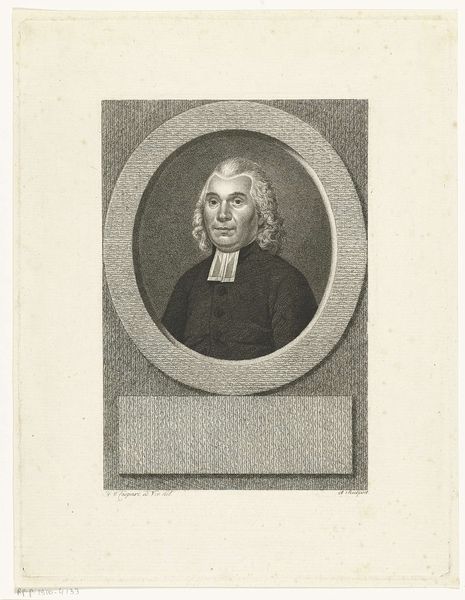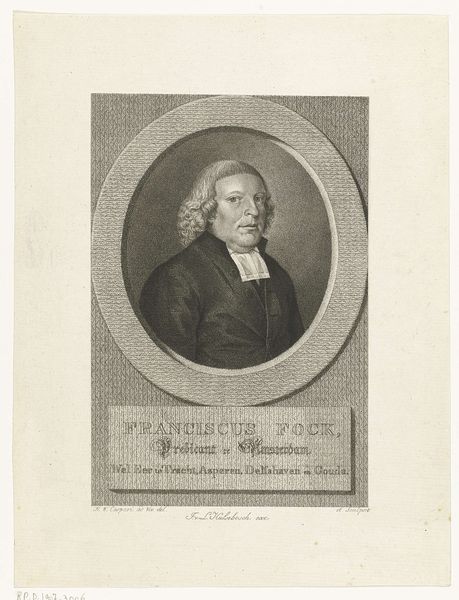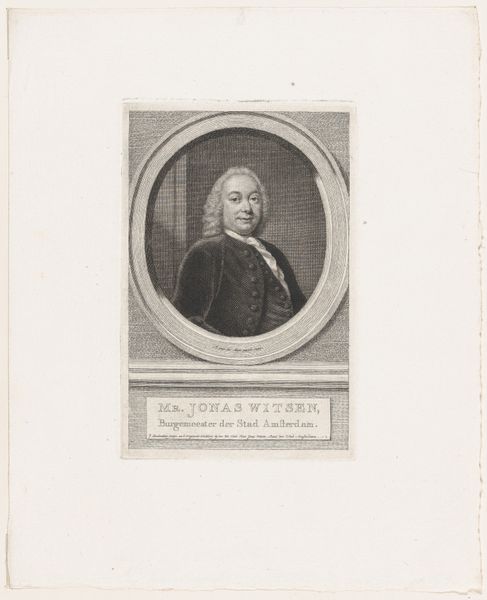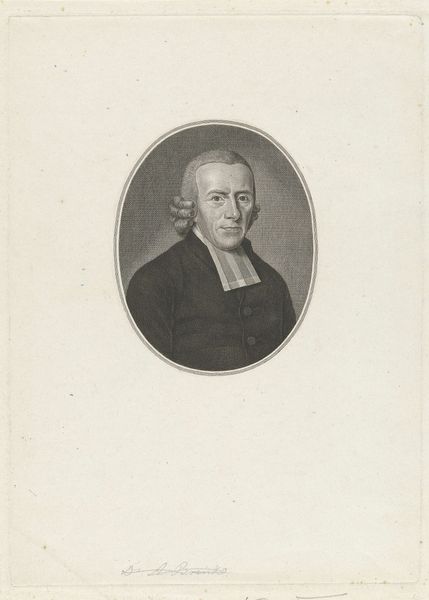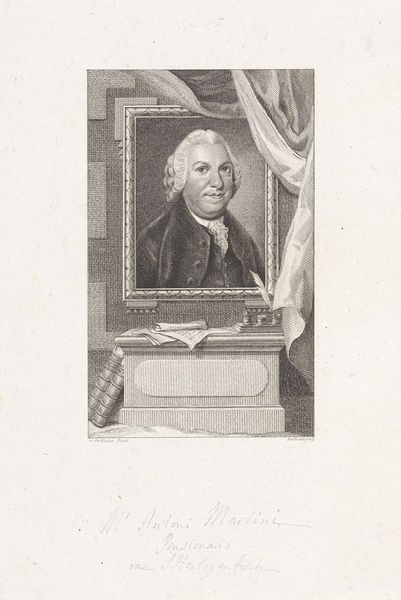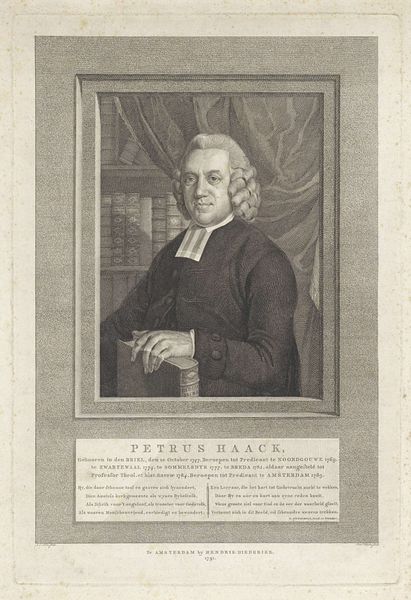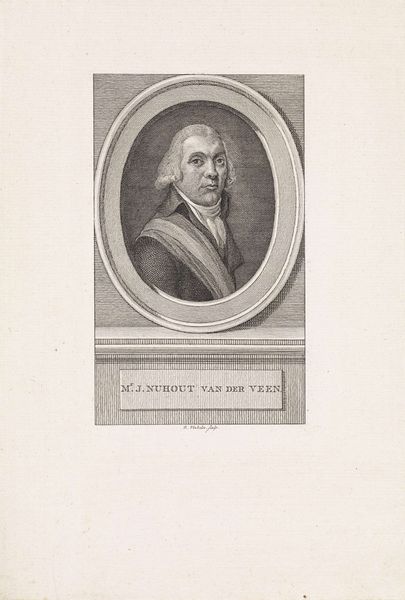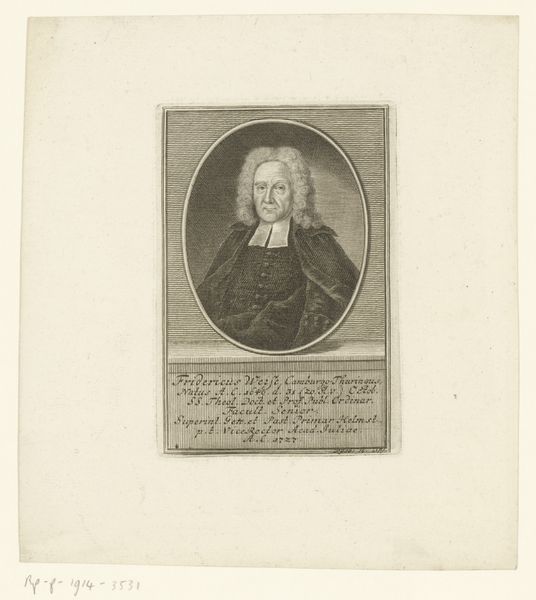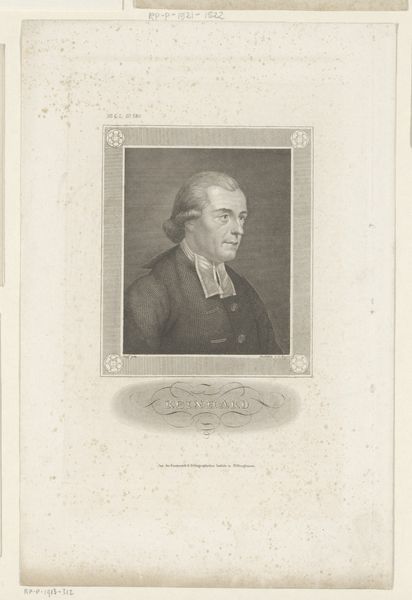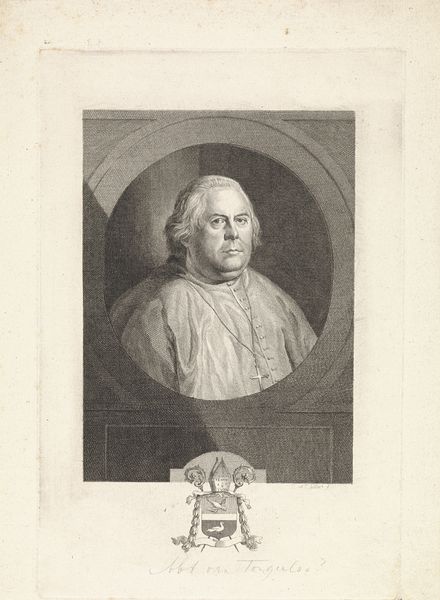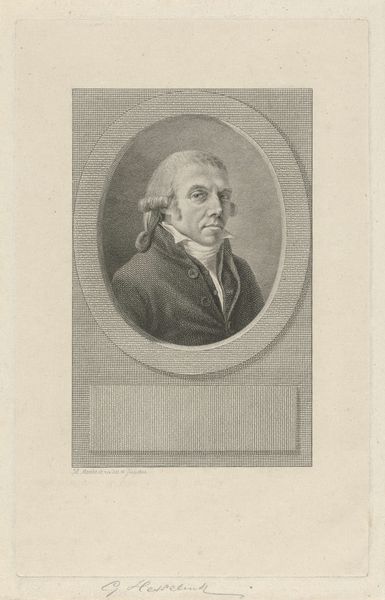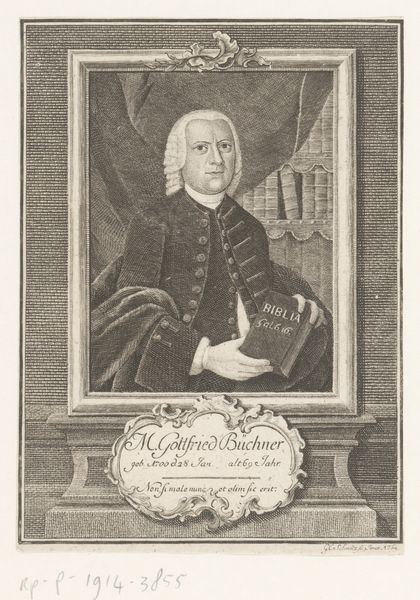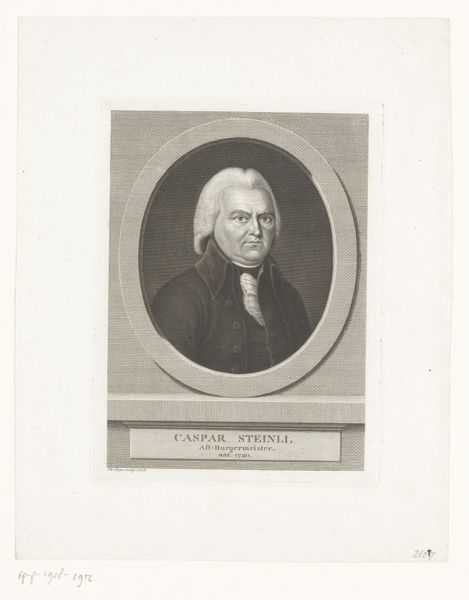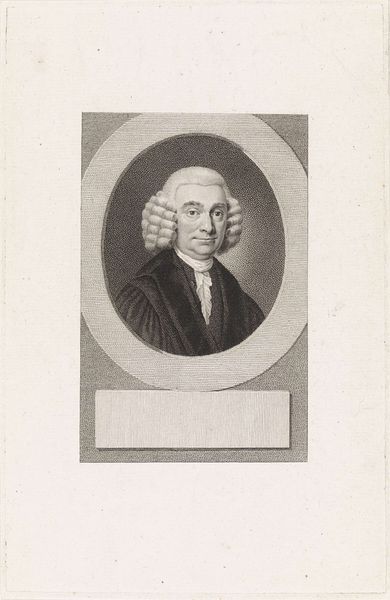
print, engraving
#
portrait
#
neoclacissism
# print
#
archive photography
#
historical photography
#
engraving
Dimensions: height 293 mm, width 227 mm
Copyright: Rijks Museum: Open Domain
Editor: So, this is Hendrik Willem Caspari's "Portret van Arent van Ysendyck" from 1803, currently at the Rijksmuseum. It's a print, an engraving to be exact. I'm immediately struck by how formal and almost severe it feels. What do you see in this piece? Curator: Formality is key here, especially considering its context within Neoclassicism. Consider the oval frame – a classical motif that harkens back to ancient cameos and coins, signifying enduring legacy. Now, look at the subject's attire. What does his garb signify to you? Editor: I guess it's the clothing of a clergyman, or some sort of official. The stiff collar certainly communicates authority. Curator: Precisely! And think about the blank tablet below. It anticipates inscription, awaiting words that would further cement this man’s identity. These are carefully considered elements, laden with cultural meaning. Do you get a sense of the values it is trying to convey? Editor: Definitely order and status, a desire to be remembered in a particular way. It almost feels… curated, in the modern sense of the word. Curator: Exactly. The artist isn’t merely representing; he’s actively constructing a visual memory. That's why symbols are key! What is preserved? What is left unsaid? What kind of stories did images tell back then? What sort of psychological power did they hold? And which continuities and discontinuities do you perceive across time, when looking at it today? Editor: That's fascinating. I hadn't considered how actively images shaped identity and cultural memory in that period. Thanks, I will definitely think about the intention behind visual representation. Curator: My pleasure! Looking closely at the visual symbols can reveal such rich details.
Comments
No comments
Be the first to comment and join the conversation on the ultimate creative platform.
